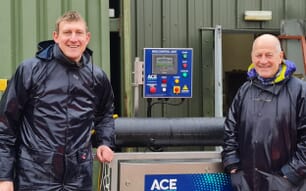
In a feeding trial carried out by NIFES, cod larvae were given dry feed with varying levels of partially digested proteins i.e. hydrolysed protein from pollack and squid 41 days after hatching. Halibut larvae were fed a corresponding feed 63 days after the first feeding of live feed. In this period of time it is common that both cod and halibut are fed dry feed.
- When we increased the content of hydrolysed proteins from zero to 400 grams per kilo of dry feed, the survival rate for the cod increased from around 7 per cent to 18 per cent. The cod had then reached the age of 82 days, says researcher Kristin Hamre at NIFES.
- The opposite result was obtained with the halibut. When the content of hydrolysed proteins in the feed was increased from zero to 450 grams per kilo of dry feed, the survival rate decreased from 57 per cent to 22 per cent, says Hamre.
- This may be because the halibut eat more slowly than cod, and that nutrients may have leaked from the pellets into the water before the halibut had time to eat them.
Leakage of nutrients from dry feed?
It is important that the fish larvae ingest, digest and absorb the nutrients they need. This is a challenge, especially in the first period before the digestive system is fully developed. Nutrients can leak out from the pellets when they are in the water and before they are eaten by the fish. In order to examine the amount of the nutrient loss, the leakage from the feed in the study described above was compared using a heat-coagulaed feed, and two other feeds, one agglomerated and one protein encapsulated, with different particle sizes (less than 0.3 mm, 0.3-0.6 mm and 0.6-1.0 mm). The leakage was examined in feed containing intact protein and in feed with hydrolysed protein.
- The results show that there is leakage of nutrients from the dry feed, especially in the first two minutes after the feed is placed in the water. The leakage increases with decreasing particle size and decreasing molecular weight of the nutrients, says Hamre.
- The agglomerated feed showed the largest leakage of nutrients, followed by the heat-coagulated and the protein encapsulated feeds. Subsequent experiments have demonstrated extensive leakage of nutrients from the protein encapsulated feed during production.
- The hydrolysed feed showed a higher degree of leakage than the feed containing intact protein, says Hamre.




